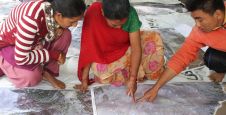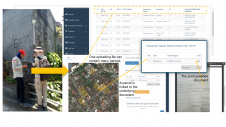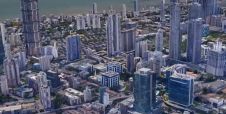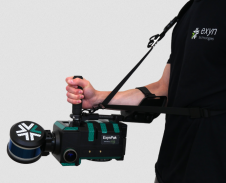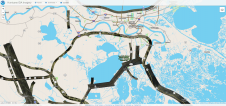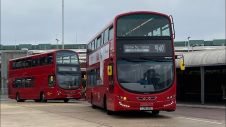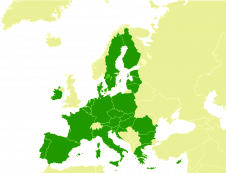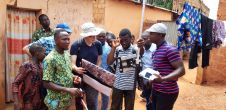Who Should Define DEM Quality and How?
Exploring a Variety of Quality Assessment Methods
The diversity of relief mapping methods and the existence of large elevation databases intended for multiple users raises the issue of DEM quality. Digital elevation model (DEM) accuracy is commonly assessed by comparing it to reference data. When no data is available, one can look for inconsistencies in the DEM since the land relief is not a completely random object. These quality criteria correspond to different needs, and producers must therefore take into account a variety of users. The question then arises as to who should specify the quality of DEMs between the producer and the user, and how. This article explores a variety of quality assessment methods, from digital elevation model to global altimetric database.
Like any industrial product, digital elevation models must present a quality that meets both the technical constraints of production and users’ requirements. A major difficulty of DEM quality assessment is that it is a product that serves a wide variety of users, depending on the information required from the DEM. In addition, due to our experience and our senses as humans, the relief is a familiar object and we place such high demands on its representation that any inconsistency may be unacceptable. However, users (scientific or operational) do not always know how to express their needs. In fact, users’ needs are often over-specified, which means that the requirements are disproportionate. This phenomenon is encouraged by the availability of very high-resolution DEMs. Beyond this risk of over-specification, it is not easy to define an explicit and quantitative indicator to measure the degree of agreement of the data with the information sought in terms that producers could easily take into account to optimize the production. This is even more critical for large altimetric databases, in which a single production method must satisfy a variety of users on a variety of landscapes in terms of relief, land cover, climate, etc. Therefore, who should define the quality of DEMs and how?
Overcoming difficulties
DEM quality is often assessed in a rudimentary way, by analysing the statistical distribution of elevation discrepancies. The most common indicator is the root mean square error (RMSE). This combines the bias and the standard deviation to verify that the model is accurate, which means that it is never very far from reality. It is, however, a rather poor approach, because it does not consider the spatial variations of the altimetric error. Therefore, it is not sensitive to the quality of restitution of the landforms, which is essential for geomorphology and related studies. The respect of landforms depends on the accuracy of the slope, the aspect and the curvature, which are derivatives of the elevation. However, estimating the accuracy of slopes from reference data has to face another difficulty, which is that the slope value depends on the DEM scale (mesh size). To overcome these difficulties, DEM quality assessment can also rely on a so-called internal validation procedure which does not use reference data but instead looks for inconsistencies (improbable or even impossible landforms) in the DEM.
Diversity of quality criteria
内部验证扩展了视觉控制的原理,这使得以适当的方式可视化的DEM搜索不可舒服。例如,单纯的阴影使得可以突出显示噪声,谱系或过度平滑的重新采样。可以通过分析DEM对几个一般规则的依从性来以更定量的方式实施相同的原则,即陆地救济应该在任何地方都能实现。可以区分两种规则。一方面,物理规则导致强烈的要求和无法满足它们的地形是不可能的。例如,水总是向下流式传输,无论如何不是在任何地方(例如,水槽的存在),在本地确定了DEM错误。另一方面,统计规则导致了薄弱的要求,尽管不是不可能,但不可能满足它们的地形是不可能的。例如,由于大多数水文流域的分形行为,给定的Strahler顺序的流数随着流阶的增加(Horton's Ward)线性减少。同样,斜率,方面,曲率以及溪流长度或流域区域的统计分布可能会揭示DEM中的不一致之处。
因此,有大量质量标准与绝对立场以及地形有关。可以使用相同的标准来定义从DEM衍生的产品的质量。例如,水文网络可能会受到几何误差(绝对位置误差和不切实际的形状)的影响,这是由于其从中提取的DEM的误差以及网络提取算法引起的。在矢量网络的情况下,也可以确定拓扑错误(图1)。
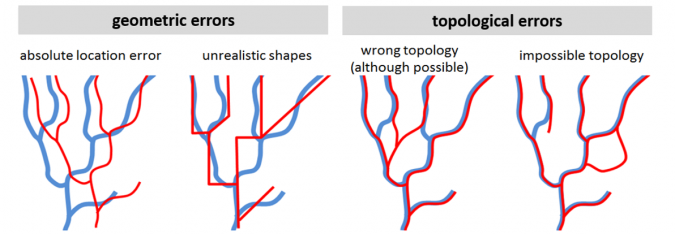
应当指出,只有在明确指定了DEM应该描述的标称地形,即,质量标准才有意义。例如,数字地形模型(DTM)描述了地面,而数字表面模型(DSM)描述了森林或城市屋顶的冠层。
Whatever the criterion, the quality of a DEM must be evaluated on the basis of the requirements foreseen for the application. However, these requirements are not always easy to express with criteria useful to the DEM producers, particularly in the case of multi-user elevation databases that must reconcile different quality criteria. In practice, due to the difficulty for DEM users to express quality requirements, the quality of a DEM is often specified by the producer and the quality indications highlight the product or method rather than informing users about limitations of which they should be aware.
DEM质量预测
超出后验质量评估的存在ing DEM, producers must be able to predict the quality they may expect before the production of the DEM, depending on the restitution method used and on the characteristics of the area (climate, relief, land cover). The quality of the DEM can be predicted to a certain extent as it is affected by the parameters of image acquisition (the instrumental and orbital characteristics of the imaging sensor) and processing, based on theoretical equations than can predict quality indicators like the altimetric standard deviation. Although this approach can help to select the best set of acquisition and processing parameters, it remains limited because the output DEM quality also depends on the interpolation process and on the heterogeneous characteristics of each area. Moreover, some of the parameters in the theoretical equation have a well-known but unpredictable influence. This is the case of the baseline in repeat-pass SAR interferometry, which is impossible to predict before image acquisition, so that the DEM accuracy is impossible to predict before the production. Therefore, predicting the performance of a DEM production method requires experience based on the analysis of numerous DEMs.
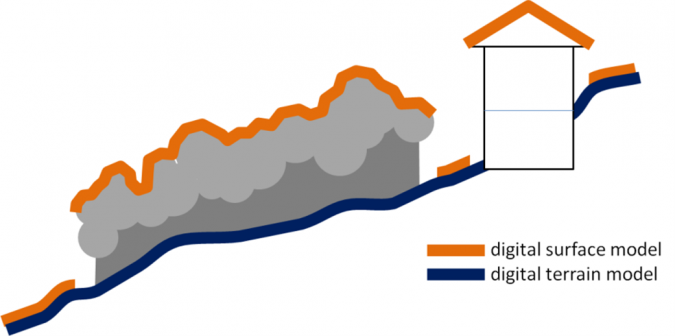
Conclusion
Understanding the phenomena that degrade the quality of DEMs can also lead to improvement methods, either during the production or a posteriori. Reference data can be used to correct an absolute bias or to remove tree height in forested areas. When no reference data is available, artifacts can be removed to force the DEM to comply with some physical or statistical rules, e.g. by filling sinks to force rivers to stream downwards, or resampling the DEM to filter noise or inversely to create a realistic variability by kriging or fractal synthesis. These DEM improvement possibilities open up new opportunities to reduce costs by using average-quality DEMs that can be improved in accordance with user requirements based on reference data or geomorphological assumptions.
Further reading
Polidori L. & El Hage M. (2020) Digital elevation model quality assessment methods: a critical review.Remote Sensing, 12, 3522, DOI :10.3390/rs12213522.
使您的收件箱更有趣。Add some geo.
Keep abreast of news, developments and technological advancement in the geomatics industry.
免费注册

